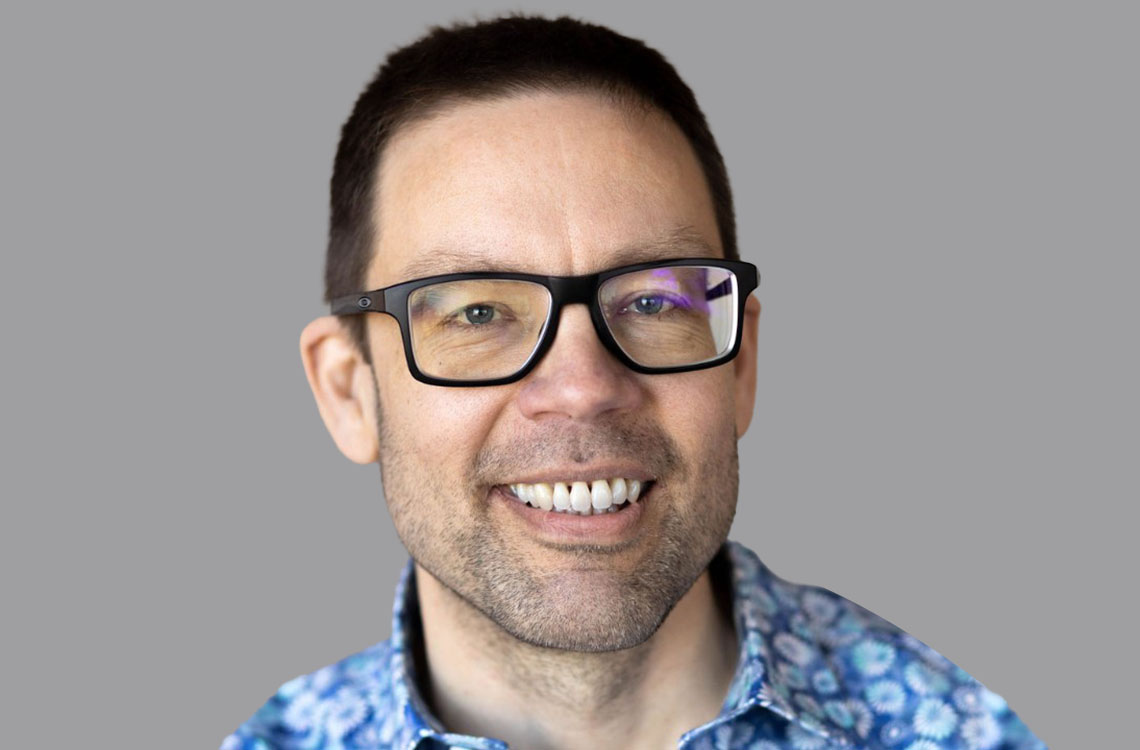Moving Through The Chaos In Sustained Movements To Create Impact With Michael Hunter
We are now at the beginning of the new year, where we all get that metaphorical clean slate to start anew and make this year our best one yet. Although life as we know it, we will continue to face change and chaos, but it doesn’t mean we have to drown along with them. We can still thrive despite them all. Greeting 2023 with us, Michael Hunter, the founder of Uncommon Change, LLC, joins this episode to offer his wisdom and insights on how leaders and their teams can move through the fog and chaos with confidence and clarity. What can we do when things are suddenly not going well? What are the concrete steps to continue to have an impact on others? How can leaders support their teams? Michael answers these questions and more, diving deep into work environments, diversity, and vital aspects of leadership. Join this inspiring conversation to learn how to make the most of 2023!
—
Moving Through The Chaos In Sustained Movements To Create Impact With Michael Hunter
Welcome to the show. My name is Jules. I will be helping introduce everybody. We are going to move through with our speakers. If you’ve never been here before, we have our expert panel of hosts. We get together every week. We always have a different speaker every week helping us out and we have different topics every week. That’s why I encourage you to show up every week because you are bound to learn something new. The best part is it’s always all for free.
This episode’s topic is so important. We’re coming towards the end of 2022, going into the holiday mode and moving into 2023. Why not talk about moving through fog and chaos with confidence and clarity? To help us do that, we have Michael Hunter whom I will introduce in a moment. I mentioned we have an expert panel of hosts as well. We are here to engage, energize and elevate your employees and company here on the show.
I have a lot of helpers here. Unfortunately, Char and Sumit can’t be with us. Hopefully, they’ll be able to join us next time. We do have Howard joining us. Howard has a lot of experience working with large corporations like Barclays and Citigroup. He is a Compensation Expert who works with Sam at CompTeam. He helps companies reshape their compensation management programs.
We also have Wendy. She dances. She has a lot of passions. She is a People Strategist and Certified TMA Practitioner with CompTeam as well. We also have Sam who is the creator of the show. He is also the Founder and CEO of CompTeam, which is a company that helps reshape organizations in the areas of compensation management and talent initiatives.
Since you’ve met this panel, that brings us to our guest speaker. I mentioned we have Michael Hunter joining us. He is the Founder of Uncommon Change. We were learning about his background. He comes from an engineering background, as well as an architectural background. What I love about his website and I’m going to quote it straight from there, is he went from debugging code to debugging people to helping people debug themselves. That sums it all up. He is a coach specifically helping software leaders create teams. We are talking about diving into chaos. How do we navigate our way through it? He has a few different strategies and areas that we can focus on to help us thrive in change and chaos. Welcome to the show, Michael. We’re so happy to have you here.
Thank you. I’m happy to be here. I’ve been following your show for all of 2022. I’ve gained so much value from reading about all of you and all of your other guests. I’m happy to be here and giving back.
Thanks for being a loyal audience. We love it. It’s awesome when we know that it’s not falling on deaf ears.
It would be lovely for all of us to learn a little bit more about you and your journey that brought you to where you are and how you help people. Can you tell us a little bit about that? How’d you start as an engineer and then move your way forward?
My whole life, I had this fundamental belief that whoever we are, the world is clamoring for that. I’ve had experiences where throughout my elementary and secondary school some teachers loved me. I’ve always been a voracious reader. Some teachers would point me at the material. Librarians loved me because I read more books every summer than anyone else across the entire library system by an order of magnitude. Yet, other teachers didn’t know what to do with me. They would be like, “You can’t read next year’s reading book because what are you going to read then?” This always perplexed me. I would be like, “I’ll read the year after that. There are plenty of books around.”
I experienced the same thing as well. I was always the kid that was continually distracted the entire time, playing with things and not quite listening. It’s a different world but we all grow up. We adapt, learn and so forth. Tell us a little bit more about how you moved from that point.
As I moved into my professional career, during and after college, I took the same approach of who I am is what you want so I’m going to do the things that I feel are important. A lot of the time, that turned out to be what people wanted. My career was pretty close to vertical. There was a seven-year span where I got promoted every year. There were other times, from what I could tell, I was doing the same thing and yet, my career plateaued or worse, took a nose dive.
There were two different times when managers were telling me, “If you don’t turn this around, you’re going to get fired,” and I was perplexed. I was like, “I’m doing what I always do. I don’t understand what I’m doing differently. Why is it working now and then all of a sudden, not?” I started looking at what were the differences between what I was doing when my career was going well and when it wasn’t.
Something else I’ve done my whole life is working with other people and helping them debug themselves. I was looking there for when your life, career or whatever aspect of your life you’re working in was working well for you, what was going well there versus when you started running into problems? What changed? I did the same thing. As I was reading all those books, the characters in fiction and the real-life people in nonfiction in their parts of their life, when it was going well versus when it wasn’t, what was different?
As I was sorting all this data, they started falling into three different buckets. Those are the people who knew when things were going well for me or the people I was working with or all these other people I was reading and watching. They understood and were doing well at sustaining their movement, maintaining their alignment and managing their impact. If I don’t know how to sustain my movement and if I can’t move, I can’t do anything.
The more I understand how to sustain my movement, I’m moving. I can start looking at, “How far out of alignment am I? How do I get back into alignment?” The more I understand about sustaining my movement and maintaining my alignment, I can start looking at, “What impact am I having? Is that the Impact I want to have? How do I manage to bring it in so that I can have the impact that I want?”
When I talk about managing impact, a lot of people at first will say, “I’m trying to minimize my impact on everyone else. I don’t want to affect them.” If we don’t have an impact on other people, we may as well not exist because we can have our happy life isolated from everyone else. If that’s what we want to do with our lives, then that’s great. Everyone that I work with doesn’t want to sit in a little cave and be a hermit. They want to be achieving something in the world. They want to be impacting other people in some way.
If we don't have an impact on other people, we may as well not exist because we can have our own happy life isolated from everyone else. Share on XIf we could back up a little bit, I want to explore the sustained movement a little bit more. When we break that down, what does that exactly mean? When I’m thinking about sustaining my movement, what does that mean precisely?
It’s everything around what do I need in place to be able to take a step? These are concrete things like what food nourishes me or what fitness program I need. For some people, being on the couch 100% of the time works well for them. Others need to be moving 100% of the time and always doing another ultra-marathon or climbing Kilimanjaro or all these epic activities. For others, it’s somewhere in between there. For me, physical movement helps me think. All of the chairs that I have let me move in some way. I feel better and I understand what’s going on. I connect with people better when I’m moving in some way. Having to sit in school still was horrible for me.
I was saying about my experience in preschool or early school. That was very difficult for me to sit in that little chair and desk. My teacher discovered that I could focus a lot better and pay attention if I was sitting on the floor. Half the time, all the other students were sitting at their desks and I was sitting on the floor next to my desk happy as a clam and able to perform much better.
I like how you mentioned that a sustained movement is finding those rituals and practices that we do every day as a person. From a manager’s perspective, those are the practices that we do every day to establish a solid platform for the team overall. Having those norms or rituals that we may take for granted provides a framework for us to do our best work.
When I go down a level of detail with sustaining movement, I talk about three things. What is your easeful environment? What do you need around you physically to bring yourself ease? For me, I need sun, space and music. For someone else, they might need the opposite or something different. As we’re building teams, we need to figure out, “How do I get what I need? How does each of us get what we need when we’re all working in the same space together? When we’re all remote or some of us are remote and some are in person, how do we make that team environment work for each of us?” I might love being on video. You might hate being on video. You might not feel comfortable showing your background even blurred out.
That’s another place I’d like to explore as well when we’re talking about perception and comfort. I was listening to a podcast not too long ago. A leader was talking about remote work. They had an opinion about people using Zoom backgrounds in remote work. That leader was saying if that person’s using a Zoom background, their perception was they’re putting up a front. It was saying, “I don’t want you to know my personal life. The stuff that’s behind me, I don’t want to expose that to you.” The leader was making that interpretation.
There are some cases where we may make assumptions like that that may be true. It’s dangerous for leaders to take a single data endpoint and draw a conclusion from that. When we have a singular data point or multiple data points, it invites a conversation to say, “Let’s talk a little bit more about that. I noticed that you always have your background. I’d love to learn a little bit more about your life, your home life and so forth.” You’re able to explore whether or not they’re willing to share or perhaps open up themselves a little bit more. There are a lot of things that we need to dive into. What do you think about that, Michael?
Conversation and asking questions about what puzzles us and even more what we’re certain of is critical. I have clients whose companies say, “For security reasons, you must blur your background,” because that’s safer. If you’re not blurring your background and you’re at home, then you’re exposing details that could let someone track you down.

Create Impact: If you’re not blurring your background and you’re at home, then you’re exposing details that could let someone track you down.
Some people are not comfortable sharing that personal side of themselves for cultural reasons and aspects of themselves that they don’t feel allowed to share at work or that they’re private people. They’re very careful with whom they share those intimate details. Other people are flamboyant and their background is part of their whole personality. With my background, I enjoy showing aspects of who I am. There are parts of my house that you will never see on Zoom. If you come to my house, you might never see it.
My company is virtual. We’re always on Zoom. We see the background but we never show the computer and where we’re working at. We all took pictures of our workspace and it was a different perspective. Howard is a great example. Howard is a very musical person. He loves music and so forth.
I love seeing your workplace, Howard, which had all these cool little knickknacks and things that make you happy daily. I thought that was super inspiring. You have great artwork throughout your house. Those are great things to explore. Michael, back to the piece though, what should leaders do to open up their teams or put them in that safe place where they can share a bit of themselves so that leader understands what is the best working environment for each of the individuals? How can I craft that as a leader for the entire team overall?
One tool I’ll often start teams with is what I call baseball cards. With the baseball cards, there’s a photo of the baseball player or more broadly, the sportsperson and a list of important stats about that person. With our baseball cards at work, I ask each person to give me an image that represents you. For some people, this is a photo of them at their favorite vacation destination or with their family. I use a photo of a stuffed sloth because that reminds me to be who I am. Sloths are slow and they don’t care. That’s their way to be. They aren’t going to be fast because someone tells them they should be.
We have some basic stats, like what names you want us to use, what your pronouns are, what is the best way to contact you, what’s your work schedule and some other things like this. We start with basic stats that everyone understands. If I know that you’re working 9:00 AM to 10:00 AM and I’m working, at best, 9:00 PM to 10:00 PM, we’re going to have to figure out a way to work together. I always am gone from 12:00 PM to 2:00 PM for lunch and take my dog for a walk.
We see the variety of how everyone prefers to be. We start to understand the diversity that we have and the impact that’s having on the team. If all of us have different schedules that have no time that matches up when we’re all there at the same time, no wonder we can’t ever find a time for a meeting. Maybe we need to have a working agreement about certain hours that we’re all going to be available.
The next step is building a baseball card for the team. Each of us is an individual on the team but the team itself is its own individual and has its rhythm, environment and resources that it needs to sustain this movement. What are those? Let’s figure that out as a team. That helps us as a team understand how we are working together. It also then helps other teams that we’re working with understand how they work with us. This is an easy way to ease into sharing a little bit about who we are.

Create Impact: Each of us is an individual on the team, but the team itself is its own individual and has its own rhythm, environment, and resources it needs to sustain this movement.
Another tool I’d like to start with is what I call all the feels. One of your guests did a variant on this where she called it What’s Up with Me Right Now. You have a certain amount of time with all the feels. It’s three minutes. She did one minute where you get to talk about whatever you want for that time and the rest of us can listen. We don’t get to react. We just listen and take it in. I like the one-minute version because that’s short enough that we could do it at the beginning of almost every meeting.
Things that tend to show up thin are, “My kid texted me that they’re out of lunch money at their account and I need to take care of that,” and then it’ll be all in on the meeting. If you didn’t know that, you’d see that that person is being distracted by their phone, not paying attention. You might think something different about what’s going on. With all the feels with a longer time, like 2 or 3 minutes, people tend to talk about what’s going on at work, also what’s going on at home or in other parts of their life. We get more of a picture. It helps us to understand, “It’s not that I don’t care about work. It’s that I can’t focus now because my mom is in the hospital, my dog is having a hard time or I got a new puppy and that’s all I can focus on.”
You can talk but you don’t have to feel that whole time. We timebox that so that someone talkative doesn’t take the whole hour for the meeting. We provide all these little opportunities for people to share aspects of themselves in ways that show we, the team, value who you are and we want to understand who that is and how can we help you.
One piece of that is leaders need to create an environment that is safe for people to share. With brand new teams that have never done that before, what can leaders do to help people open up and feel safe to share like that? Is it a thing over time or is there something that they can do to click in the process?
The most effective leaders I’ve seen do this over time. They start modeling it from the start but it has to be not, “On my first day, I care about you and then after that, I don’t.” It can’t be, “We’re at an offsite so today, we care about each other and the rest of the time, we don’t.” The only way to show that for people to believe it is to prove that over time.
For a lot of people and especially in engineering, I can’t tell you how many people have told me when I started working with someone and I’m asking, “What’s going on for you now?” They say, “You don’t understand. I went into engineering so I didn’t have to deal with emotions.” If a big new leader shows up on day one and starts asking everyone to share their emotions, some of us are going to be freaked out but we can start modeling it.
If we come on full force, then it may seem, “I’m big and important. I’m sharing all this about my background because you should know who I am.” It has to be brought in the right way like, “This aspect of me matters in this context because of reason XYZ. I’m sharing this with you because if you understand this, then it helps you work with me better and it helps me work with you better.” Some common examples or ways that are easier to start with are, “Do you prefer to start with the big picture first or details?” If I prefer starting with the big picture and every time that we have a meeting, you flood me with details, I’m not getting what I need. It’s harder for me to understand what you’re telling me because I have to translate all those details into the big picture that I start with.
The other side of that is if you prefer details, it can take you a lot of energy and time to turn that into the big picture to start with me. We can start having a conversation about, “When I need a flex out of my preferences, it takes me time. When you need a flex out of your preferences, it takes you time and energy. How do we want to meet?” For some teams, they decide, “We’re going to pick a point where everyone’s a little bit out of their preferences so that everyone’s working a little bit and no one’s having to work a lot.” Teams often find that this helps them come up with more creative solutions because they’re all a little bit off balance.
Managers will decide, “I’ll always flex the preferences for my team so that I’m going to spend the energy and that they don’t have to. They can 100% focus on what we’re talking about, what I need them to do and tell me back what’s going on.” Other managers decide to go the other way. They’re like, “I don’t have time to flex into everyone else. For other reasons, I decide not to. I’m going to tell them I want the big picture first. Give me details and slides that you send in an email.” Everyone knows, “When I work with that manager, this is how I do.” It’s all conversations about everything that we can think of.
It doesn’t have to be all at once. That’s pretty overwhelming. I have a worksheet that I work on with clients that have 27 different boxes that we fill out. When I bring that up, I have assumed it into one. They’re like, “We have to fill out 27 boxes? That’s a lot.” I’d be like, “No. We’ll start with this one and then slowly zoom out.” Maybe they’ll ask a question that refers to one of the other boxes. I’ll zoom out and say, “That’s down here.” Maybe we’ll jump down to that box or know where it’s coming in the flow and then I’m like, “We’ll get to it later.” Pretty much every problem I’ve found comes down to there’s a misunderstanding that hasn’t been communicated or has been misunderstood in some way.
Pretty much every problem comes down to a misunderstanding that hasn't been communicated. Share on XLet me highlight something that I experienced especially every year at this time. Being a compensation professional, the year-end is some of the busiest times that we experience because everybody’s getting ready to make adjustments next year, getting the budgets ready and spending what’s left in their budget for this year. What I find is that there are certain norms of behavior that team members may have in non-stressed environments. When they become stressed, different types of behaviors come out.
For instance, there may be some who when they’re stressed withdraw. They don’t communicate as well. They may not be responsive to emails or they may miss meetings or be late to meetings. Others respond exactly when you said that the amount of flexibility they have will change. I’m probably that way. I’m flexible when I’m not stressed but then the more stressed I become, the less flexible I can afford to stay on track. Is something else that we should be aware of understanding when a person’s under stress and understanding how their behavior changes in those environments?
Yes. This is one place where what’s going on with me, all the feels can help. It gives us a built-in opportunity to let our team know, “I’m feeling pretty stressed now.” I don’t even have to tell you why. I can say, “My brain isn’t working well. I’m feeling stressed and emotional. I’m having a hard time processing concepts.” The more that we have those conversations about, “When I’m stressed, I tend to react this way. What helps me de-stress is doing these things,” then that gives the rest of us the opportunity to notice that this is going on with you. We can say, “I see that you seem way less flexible today than you normally are. How are you feeling? How can I help out?”
I’m thinking this is a way to get into that alignment with the team overall, understand how we are coming together and so forth. The next step in your process is how can we come together for greater impact. That’s the next step. Can you tell us a little bit about that?
What are our ways to manage our impact? How do we do that as a team? This starts with some very concrete questions like, “Do you prefer starting with the big picture or details? Do you tend to talk to think or think to talk? Does being around people give you energy or cost you energy?” If I am a talk-to-think person and you’re a think-to-talk person, when I ask you a question, I expect you to start talking. Instead, you’re sitting there thinking so then I’m like, “What’s going on? Was I not clear?” Maybe I start rephrasing that question. I must not be clear so I’m going to say it to you in a different way. I keep doing this and you’re like, “Shut up. I need time to think.”
Since you’re a think-to-talk person, you can’t even tell me because you don’t have enough space to realize what’s going on to be able to tell me. On the other side, if I am a talk-to-think person and you’re a think-to-talk person, when you ask me a question, I start talking and go through five different changes in opinion until I get to what I believe. You’re going to listen to this and say, “Michael is so full of himself. He won’t stop talking. He changes his mind five times. What is going on?” I need to shut up, figure out what he believes and then tell me. This causes problems.
If I understand that you’re a think-to-talk person, I know that if I ask you a question, you’re probably not going to say anything for a while. I can ask the question and then say, “Am I being clear?” That gives you a simple yes or no to answer, which probably will still take you a minute to decide whether you understood. As a talk-to-think person myself, I try to remember telling people, “Give me a minute. I’m thinking and I’ll have an answer for you.”
The theme in HR across the world has been diversity, inclusion and bringing in people of different genders, different ethnicities and so forth. The fact that people think differently is an emerging field. I’m going to bring up a couple of old movies that are from my day. You think about movies that are funny like Legally Blonde. This is a woman that comes out that is very talkative and flashy. We make assumptions about her appearance that we find that she’s talented, smart and so forth.
Another one is Rain Man. This is a person that is cognitively diverse and has a different way of thinking but the performance that comes out of that individual is substantial. This is probably even more common in engineering teams with deep thinkers that are good with attention to detail and sensitive to their environment. When they’re doing all their wonderful work, they like either the quiet environment or having their headphones on with the music.
What a lot of companies are missing is the importance of environment or the importance of accepting people, putting them in situations where they can do their best work or putting them in supportive teams, understanding the uniqueness of each individual and bringing out the best not only individually but as a team as a whole. That’s what inspires me about your focus. It’s the fact that you’re looking at these points. You’re looking at the individual and how to bring the team together to be the most effective. This is super inspiring.
This is another aspect or facet of diversity. Who I am is different than who you are, Sam, Wendy, Jules or Howard. A team of just me is going to have a lot of blind spots. A team of me and Sam, Wendy, Howard and Jules, if we understand where we’re similar and where we’re not, then we can be more aware of what blind spots we have and how we counteract those blind spots.

Create Impact: If we understand where we’re similar and where we’re not, then we can be more aware of our blind spots and counteract them.
It used to be and I don’t know if this is still true, that something like 85% of software engineers tended to be big-picture, logical thinkers. It makes sense. This is what software is all about. That means it’s easy to miss all those details. I’m pretty sure that this is one reason software has such a reputation for being way off schedule so much of the time.
We have all these big-picture thinkers who forget that all these little details go into those big pictures. We look at a thing and say, “That’s going to be three months,” without seeing all the details that it’s going to be 3 or 5 years. This is showing up in a different way that a lot of software companies are wanting computer science majors. This means that we’re building teams and companies around people who have all been taught to think and approach problems in a certain way. That’s giving us huge blind spots from people who came into software from a different direction.
This is one reason that I’m excited about all the companies that are taking people from different backgrounds who don’t have a computer science degree but came from being a mechanic, a musician or doing frontline retail their whole career and teaching them programming. Even though they’re learning programming in the same way as all those computer science majors, they have all these different backgrounds that they’re bringing into this. They all have different viewpoints. They’re approaching the problems in different ways. The more we can get that diversity of viewpoints and insights, the better off we all are and the more likely that we will get to the impact we want to have.
The more we can get that diversity of viewpoints and insights, the better off we all are and the more likely we will get the impact we want. Share on XThis is something that I know that we’ve experienced a lot in our field, especially with compensation software. A person that is building compensation software has to know comp. They need to know how pay is determined and so forth. That type of person alone often thinks of things almost like an Excel spreadsheet or spreadsheets themselves. They’re thinking, “I fill in this and then the result comes up.”
One thing that was lost in a lot of the software design of the past in our field was the user. The user is not the compensation practitioner. The users are managers and leaders that don’t necessarily have the same acumen. Leaving that person out of the process caused a lot of the software development back then to be very clunky and not to be visually appealing to the end user. Having that diversity in the process as you’re building that product is essential.
A physical representation of talking with the people who are the ones who are going to be using what we’re building is the main downtown Seattle Public Library, which looks different from most libraries. One of the central aspects is the non-fiction stacks or a big spiral that goes up around 6 or 8 floors. It’s one continuous spiral. This came out of the architects talking with librarians who were saying, “The number of books we have in any particular part of the Dewey decimal system fluctuates over time. If you give us individual floors, then we have to make these discreet steps of arbitrary bricks.” There’s the spiral where if you need another 10 feet or 1,000 feet of shelf space for some part of that system, you slide everything over. It’s way simpler.
I’d love to see that design. That’s another example of where we’re taking the physical environment and making it work for our line of thinking. We’re adapting to the environment in ways to improve performance.
We’re understanding what impact that environment is having on us. For me, being around people takes a lot of energy. The times when I worked in the sea of cubes were hard and challenging for me. I love working from home because it’s just me here and my dog. I can bring people in virtually or physically when I want to and I can kick them out when I need to.
For other people, since the offices are starting to reopen, they’re going into the office every day even though most of their team is still remote. That environment of having people around, being able to walk down to the kitchen, having more of a physical space between their desk and the kitchen and being in this different physical environment that signals work to them works way better. As teams, we need to figure out how we can let this work for everyone.
I have a few more questions for you specifically about building a high-performing technology team overall. How is technology or engineering different? What are the main differences that leaders should know about when they’re thinking about that particular discipline compared to other teams across the organization?
That’s somewhat challenging for me to answer since my whole career has been in engineering. What I’ve seen from the people in the other disciplines that I’ve worked with and worked alongside is the different functions in a company have a different focus. For engineering, our focus is to build the software product and get it to the customers that we’re meant to have, whether that’s targeted or broad.
For people in HR, their focus is, “How do we help people be their best in the most cost-effective way for the company?” Sales is focused on, “How do we sell what engineering is giving us, apply that to the most customers we can find and show them how it’s making their lives better?” Marketing is bridging between those two like, “How do we let the world know about this thing that engineering is building so that when sales go and talk with people some of that groundwork is already laid?”
The more that leaders at every level of the organization, through the breadth, understand and talk about conversations about, “This is what I’m trying to do. This is what I need from you,” the more we can build those agreements of how we work together. Marketing, oftentimes, is planning out campaigns months ahead of time. They want to know exactly what’s going to ship and when’s it going to ship.
In engineering, oftentimes, we don’t know exactly how long things are going to take. We would like to ship things when they’re ready. There are ways to make both of those work together where we have to have conversations. Otherwise, we get into the stereotypes of engineering, which is reacting and building to whatever sales have told the customers will be out. Those are the dysfunctional stories that we’ve heard that are true in certain situations and most are not the case.
The more that we can understand, the more that we interact, then the more we have opportunities for engineers, marketing, sales, customer support, tech support, IT and everyone else to spend time working alongside each other. Both can be like, “Let me shadow you for a day, a week or a month and understand what your day-to-day is like. Also, as I’m building the system as an engineer, how do we invite you, make it easy and encourage you, the salesperson, the marketing person, the IT person and the CEO to engage with us and be part of that process without derailing it?”
Tell me for our audience out there that is thinking, “This makes sense. I want to make sure that our teams across the organization can better work with our technology team, our engineers and so forth to deliver that high-quality product.” How can those people contact you and learn a little bit more about what you do to your offering and what you do best?
I am at UncommonTeams.com. You can sign up for my newsletter there. It’s at the top of every page. You’ll get a weekly little vignette of what are mostly, more or less, a verbatim conversation I’ve had with leaders of problems that we’re struggling with or they’re struggling with and simple, tiny steps or experiments they can make to start to make progress. I have a contact form there. You can contact me at [email protected]. I’m on LinkedIn. Email me. Sign up for my newsletter. Message me on LinkedIn. Those are the three easiest ways to connect.
You have a podcast that’s out. I was fortunate enough to be a guest. Where can people find your podcast?
That’s my video interview series. Every other week, I have a new interview with a leader in or around software talking about their journey towards leading uncommonly. That’s on my website. These launches, I post these on LinkedIn as well. The audio version is on Google, Apple, Amazon and Audible. That’s Uncommon Leadership. You are my launch guest, Sam and it was a great conversation. Coming up, I have one of the big sales consultants and teachers talking about leadership. I have several people who are doing engineering day-to-day at different levels in their organizations.
All of us are leading uncommonly. We’re all having the impact, maintaining the alignment and sustaining our movement in the ways that we want to. Some of us are getting started or being super successful. Some of us have been doing it for a long time or still struggling. That interview series is about showing the breadth and how wherever you are, there’s always a tiny step or experiment you can make that can get you a little closer to your goal.
Wherever you are today, there's always a tiny step, a tiny experiment, you can make that can get you a little closer to your goal. Share on XThank you so much for joining us on the show. The approach that you have to build highly effective teams, especially in the engineering and technology sector, is incredibly important. I’m thankful that you’re bringing this intel to our leaders so that they can have higher-performing teams.
Thank you for having me here. I enjoyed the conversation. I look forward to connecting with all of our audience and helping them on their journey to becoming uncommon as well.
Listening to this episode gave me a lot to think about. Thank you.
Thank you. For all of you, whatever has impacted you and given you something to think about, I’d love for you to contact me and let me know what that was.
Thank you so much. Have a wonderful holiday. We’ll see you in 2023.
That sounds great. Thank you all.
Important Links
- Uncommon Change
- [email protected]
- LinkedIn – Michael Hunter
- Google – Uncommon Leadership
- Apple – Uncommon Leadership
- Amazon – Uncommon Leadership
- Audible– Uncommon Leadership
- Uncommon Leadership
About Michael Hunter
 I offer simple and safe approaches to resolving your tough problems with strength and stability.
I offer simple and safe approaches to resolving your tough problems with strength and stability.
I help leaders and teams find their way to handle change and thrive amidst the chaos it inevitably brings.
This allows them to move forward, even when they don’t know where they are going, with early warning if things are about to go off the rails.
I started my career debugging code. Then, I switched to debugging people. Now, I help people debug themselves.
What I’ve most enjoyed over my career is helping software leaders—those who are forming teams around them, whether consciously or not—to create teams where each person feels safe and comfortable engaging their whole self.
If you’d like to build Uncommon Teams who meet goals with confidence and clarity, sign up for my newsletter using the boxes at the top or bottom of this page.




